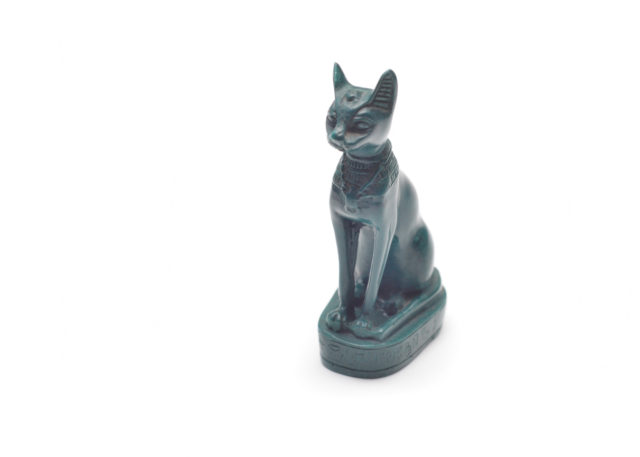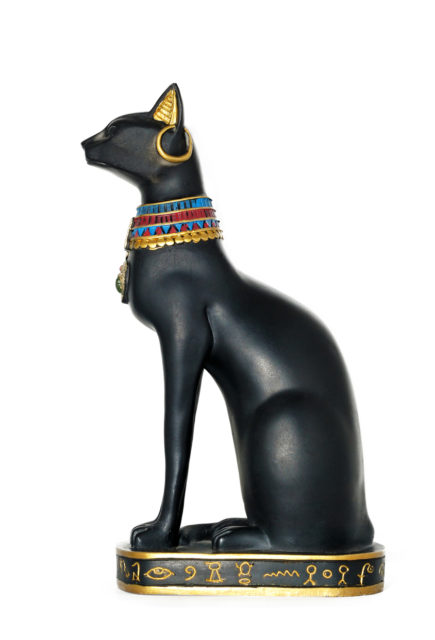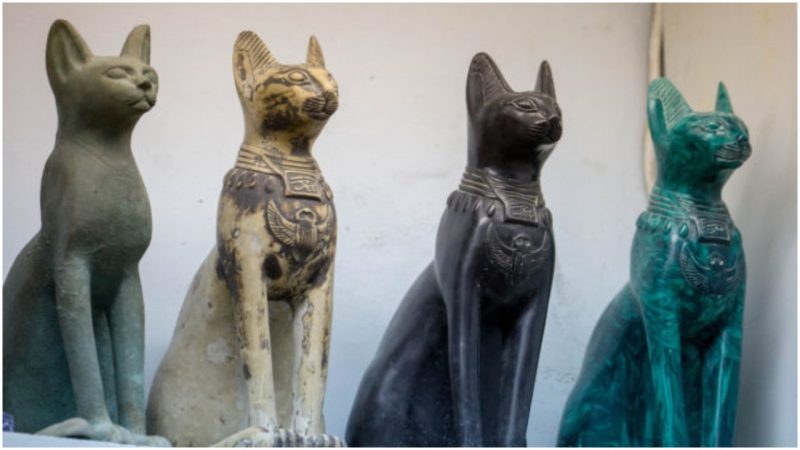The Ancient Egyptian religion was a vastly complex system of polytheistic beliefs that included an elaborate mythology and a large number of deities. Many of the deities were frequently represented as animals: the funerary god Anubis was depicted as a jackal; Hathor, the goddess of fertility, was often depicted as a cow; and Horus, the god of sky and kingship and one of the most significant ancient Egyptian deities, was usually depicted as an ornamented falcon. Animals’ significance extended beyond representing the gods; they were an integral part of Egyptian culture and society.
Cats were especially favored by the ancient Egyptians. They were considered sacred as the embodiment of the goddess Bastet, who represented protection, motherhood, and fertility. Domesticated cats were common in households across the kingdom: Noblemen considered them as symbols of wealth, status, and grace, and regular folk praised their ability to kill venomous snakes and keep vermin away from granaries. Harming a cat was considered a serious offense that was punishable even by death.

A number of ancient Egyptian cats were mummified and buried along with various jewelry, and many mummified cats were displayed at various shrines across the country. However, some ruthless and cunning entrepreneurs of ancient Egypt took advantage of the fact that cats were considered sacred. They bred cats only to kill them when they reached maturity: they did this so that they could mummify the cats and sell them to priests, pilgrims, and anyone else who wished to adorn their personal shrine with an actual mummified animal.

Such cruel entrepreneurship was likely the background story of the largest mass grave of mummified cats ever found. In 1888, a farmer was digging a well in the desert outside of the town of Beni Hasan, some hundred miles from Egypt’s capital city of Cairo. At that time, the area around Beni Hasan was already known for several tombs of noblemen of ancient Egypt, including the tomb of Amenemhat who was the chief priest during the reign of the pharaoh Senusret I in the 20th century B.C. Still, the farmer didn’t expect his digging to uncover a hidden underground tomb which contained as many as 80,000 mummified cats.
The farmer’s discovery soon attracted a number of locals who flooded the site in search of valuables. They found nothing except for a cat-sized bronze sarcophagus and some jewelry, so they started selling the mummified cats to whoever would buy them. Since these cat mummies were perceived as worthless at the time, most of them were sold at a measly price. Some were sold to people across Egypt who kept them as souvenirs and a large number of them were sold to a local contractor who reportedly ground them up and used them to make fertilizer and paint.
As much as nine tons of mummified cat remains were transported to Liverpool, where they were sold at two auctions organized by an auction house named Gordon and Co. During the second auction, the auctioneer reportedly used a cat skull as his auction hammer. Since many members of the British upper class of the time respected the immense value of ancient Egyptian cultural heritage, most of the Beni Hasan cat mummies were bought by Egyptologists, collectors of antiquities, and representatives of various museums. A ton of ancient cat remains could have been purchased for a measly price of 17 pounds, which is equivalent to a little more than $2,000 in contemporary terms.
X-ray analyses of a number of the Beni Hasan mummified cats were conducted in the second half of the 20th century. The analyses have shown that most of the cats were less than a year old when they died and that they were likely purposely killed by blows to the head.
This suggests that the unfortunate cats were probably a part of some mummy merchant’s devious plan to earn money from cat-worshipping ancient Egyptians.
